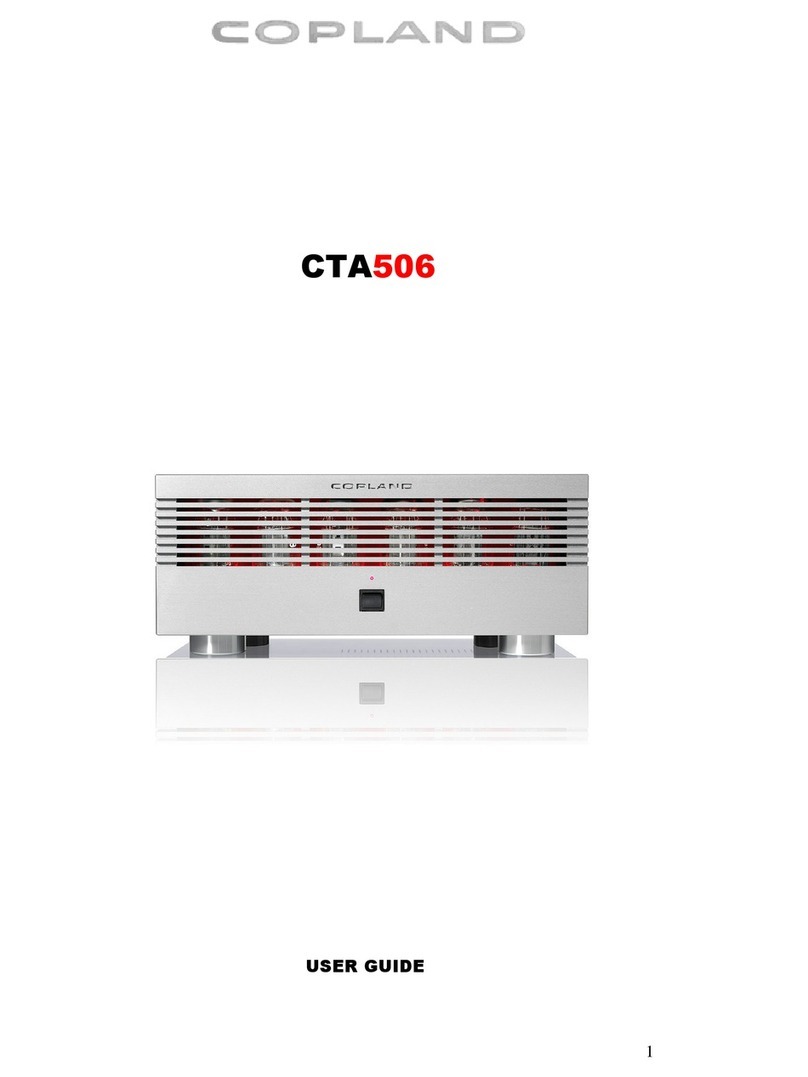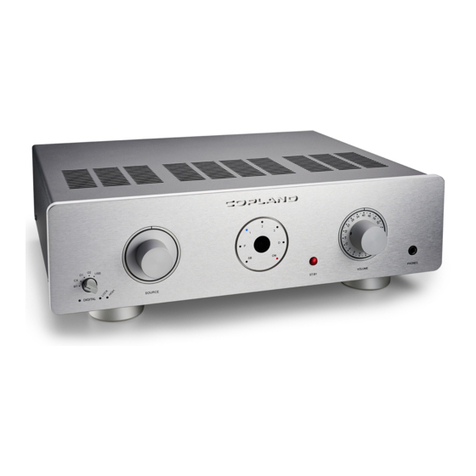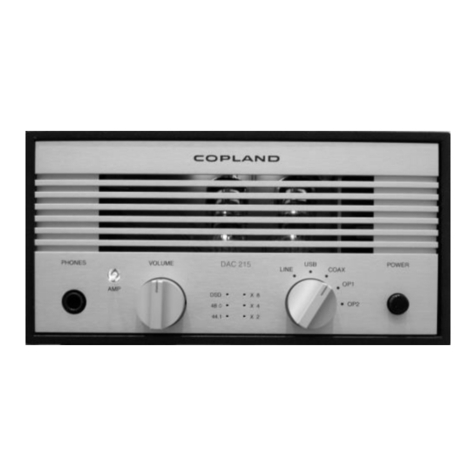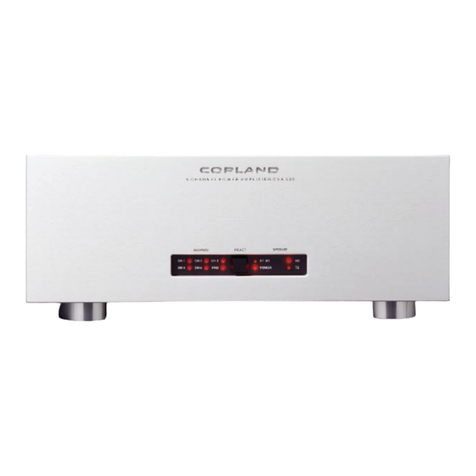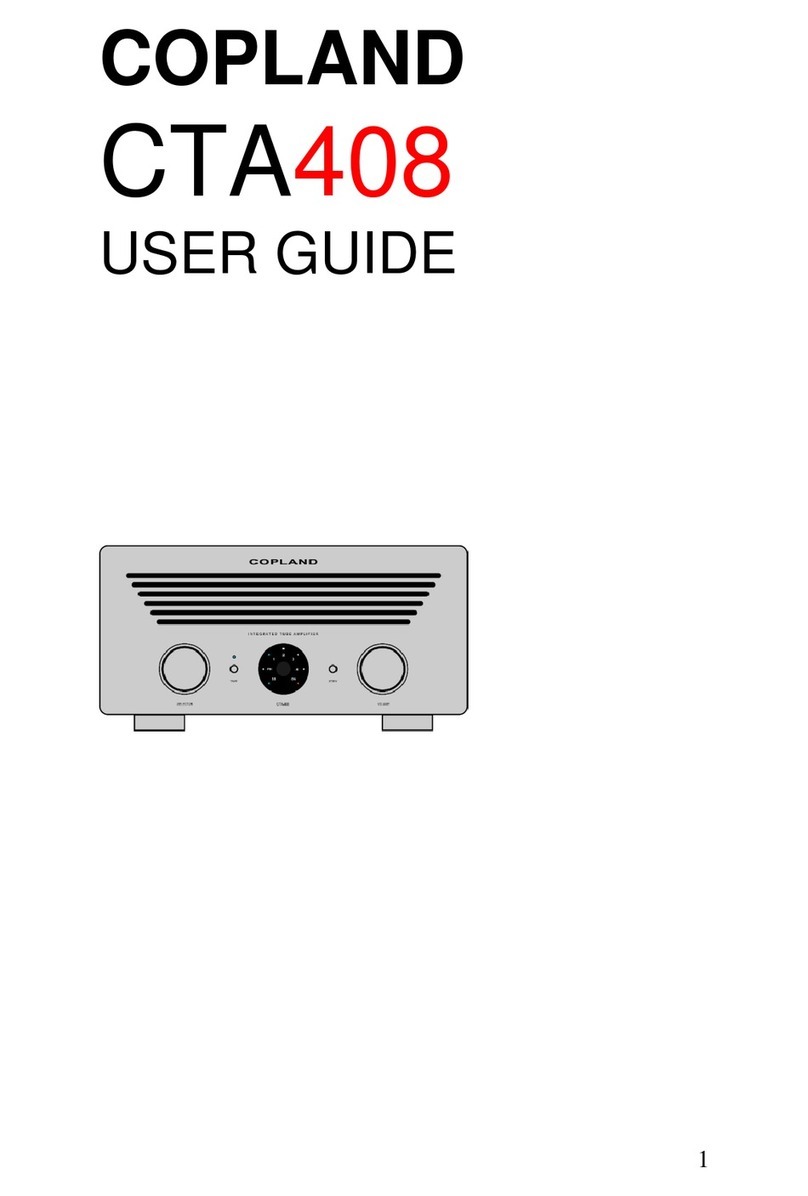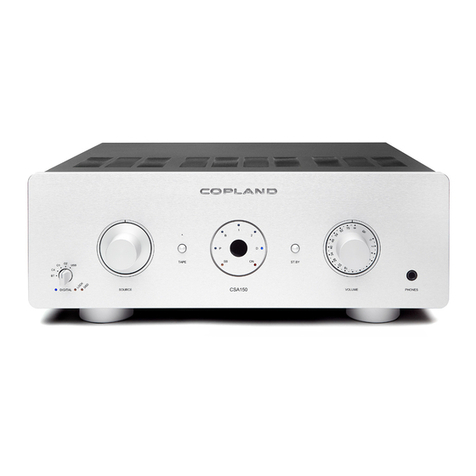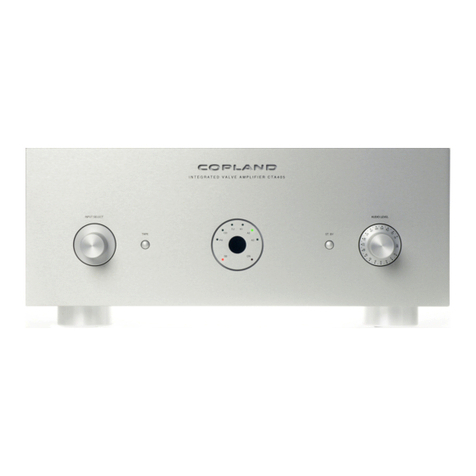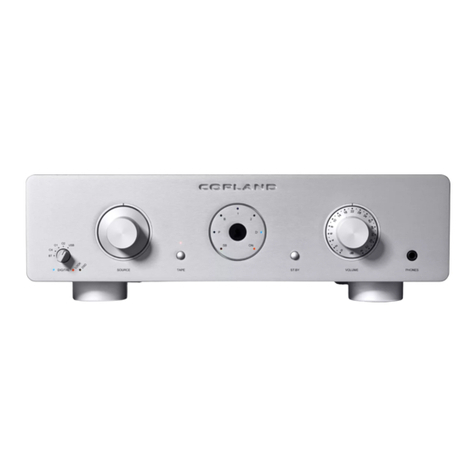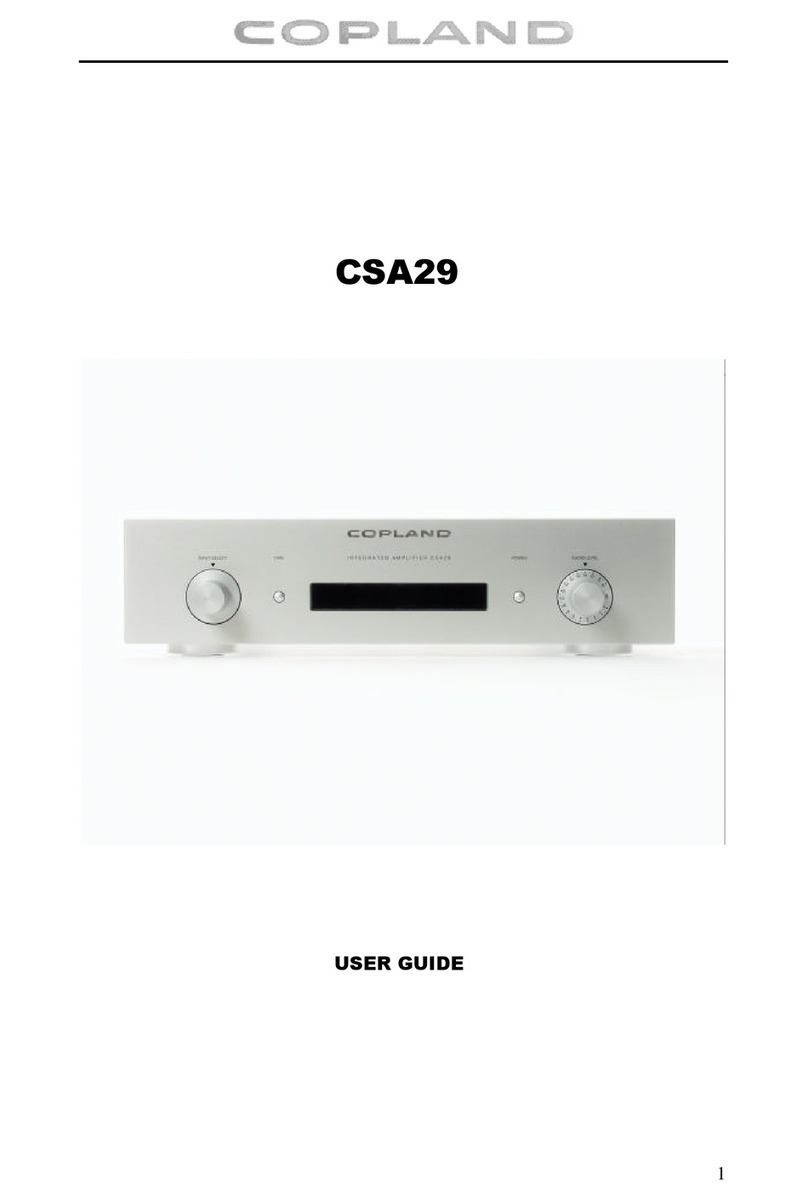61 2 3 4 5
1. Source Selector: Selects the appropriate
input signal source.
2. Tape Monitor: If you have connected a
tape recorder to the “tape in” on the back
of the unit, then switching ´Tape’will
make it possible to listen to tapes.
If your tape recorder has a monitor
capability (usually requires a separate
playback head), you can monitor your
tape recording as it is being recorded by
switching the tape button.
The Tape Monitor function can also be
useful when adding an Equalizer / Room-
correction unit in the signal chain.
A red lamp right above the tape key
indicates Tape Monitor activated.
NOTE: When the Tape Monitor is engaged,
it bypasses the Selector Switch. Regardless
of which source the selector is set for, you
only hear the tape input.
If the Tape Monitor is accidentally left on,
none of the inputs on the Source Selector
will operate.
3. Display: The display shows the selected
source input.
A flashing ‘ON’ lamp indicates that the
amplifier is under its 30 seconds start up
procedure. When the ‘ON’ lamp stops
flashing, the amplifier sound stages start
operating after another 20 seconds.
A continuous flashing ‘ON’ lamp for more
than 35 seconds. Indicates that the
amplifier is in ´protection mode´ and
needs to be reset by turning the back
panel AC-power switch off a few seconds
and then on again.
(More information about the ´protection
mode´ to be found on next page of this
manual)
4. Power Switch: Pressing this key, the
amplifier will switch cyclically between
operation and standby mode. Power On
and Stand By are indicated in the display.
5. Audio Level: To adjust the volume to
the desired listening level, turn the control
clockwise to increase the volume.
6. LED: Reducing the numbers of lighting
bias LEDs to only green ones on
